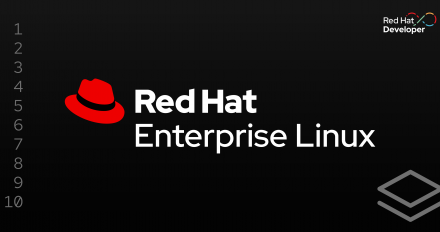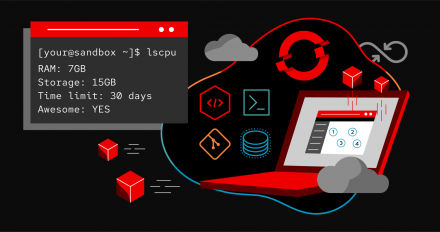
Red Hat Application Development Products
Cloud native technologies to develop, deploy, and manage responsive and scalable applications anywhere.

Cloud native technologies to develop, deploy, and manage responsive and scalable applications anywhere.

Use existing SystemTap tapsets to make your SystemTap scripts more concise and more portable. Write your own tapsets to allow yourself and others to reuse SystemTap code across multiple instrumentation scripts.

An exploration of how to use built-in build tooling available in OpenShift Container Platform 4 to build multi-architecture container images when running a cluster with multi-architecture compute machines.

While learning about state-of-the-art software development is important and

Get insights for improving JIT (just-in-time) compiler performance for Ruby based on a GCC engineer's experience developing an MIR-based JIT prototype.

Ruby is an object-oriented programming language that balances functional and

Learn about 8 optimization techniques for a faster interpreter in Ruby which I developed using a dynamically specialized internal representation (IR).

Thanks to months of effort, many packages from these Python and Ruby repositories can be installed as RPMs from Red Hat's COPR system. Learn more.

Discover the new features and tools that help developers deliver services and workloads faster in Red Hat Enterprise Linux 8.3.

Explore the Red Hat Enterprise Linux (RHEL) 7 language and runtime updates available in Red Hat Software Collections 3.5 and Red Hat Developer Toolset 9.1.

Take an in-depth look at the MIR lightweight JIT compiler project's goals and state of development, such as the addition of support for CRuby.

Ruby 2.6 is now generally available and supported on Red Hat Enterprise Linux 7; get details here.

The latest release of Red Hat Software Collections 3.3 Beta includes three new and two updated components. Learn more in this overview.

This post shows the advantages and disadvantages of using register transfer language (RTL) for CRuby, and it compares the performance of RTL CRuby with that of trunk CRuby.


Reviewing source code can be helpful in understanding how code works, but the static view may not give you a complete picture. The paths taken through code are heavily data dependent. Learn how to use Systemtap and debuginfo to dig into the Ruby interpreter internals on Red Hat Enterprise Linux 7.

This blog post is about my work to improve CRuby performance by introducing new virtual machine instructions and a JIT. It is loosely based on my presentation at RubyKaigi 2017 in Hiroshima, Japan. Version 3 of Ruby should be 3 times faster than version 2.

Ruby has come a long way since JRuby first ran Rails in 2006. Frameworks like Rails have grown up with the modern web, now supporting web sockets, microservices, and integration with Javascript client libraries like Ember. Concurrency utilities modeled after the JDK are helping Ruby scale horizontally. Applications can be built with Rake - or with JRuby plugins for Gradle and Maven. Maven poms can be written in a beautiful Ruby DSL. Swing, JavaFX, and other graphics libraries become easy and fun with JRuby. Sass and Asciidoctor are already being used in Java apps thanks to JRuby. And you can bundle up the whole thing in an executable jar or war file; your devops will never know it's Ruby. Come see what JRuby 9000 can do for you in 2015.





